PICASSO’S LE COQ
The inventory situation in my art room has reached a critical point. I have depleted my black oil pastels, white paper and white paint. This trio is my milk, eggs and bread of the art room. Not wanting to place an order when I have two more weeks of classes, I’m forced to go beyond what is comfortable and start using up the left-overs.
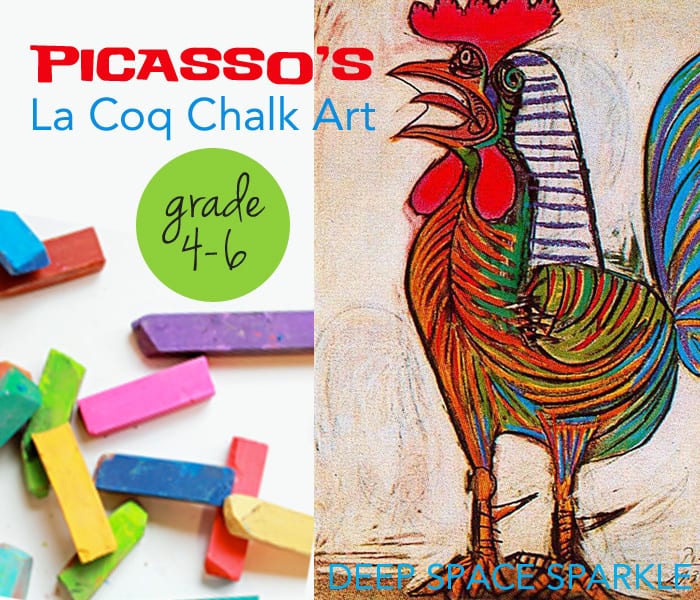
My pastel drawer, which in September was flush, organized and plentiful, is now barren, chipped, stubby and pathetic. Still, chalk pastels work just as well when they are broken and as when they are unbroken.
My fifth graders hadn’t worked with chalk this year so I brought out my trays of broken bits and thought back to one of my more successful chalk lessons for older kids, Big Fat Hens. Turns out that I have a huge carton of black paper (the results of a paper ordering mistake) so I set black paper, oil pastels and chalk pastels on the table. Instead of re-creating the Big Fat Hens lesson, I recalled that Picasso created a colorful cubist rooster. Turns out that I had a poster of this piece, so I introduced Pablo Picasso’s Le Coq to my fifth graders.
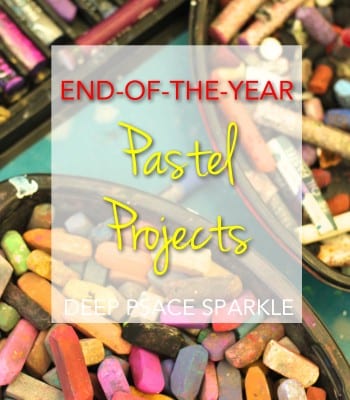
To start, I had some fun on the white board demonstrating how Picasso used cubism to draw portraits. I drew examples of how the profile and frontal views of a face merged to form a typical “Picasso” portrait and how he used the same technique with the rooster. We talked about the placement of the rooster’s eyes and how Picasso broke up the body into angular sections.
Then the kids got busy.
First they used a colored oil pastel to draw the rooster. My fifth graders are very comfortable drawing with oil pastel at this point in their art journey. They know that if a mistake is made, they can turn it into something else or turn over the paper. Some of the kids practiced on one side of the paper and created their good drawings on the other side.
Read how to work with chalk pastels here.
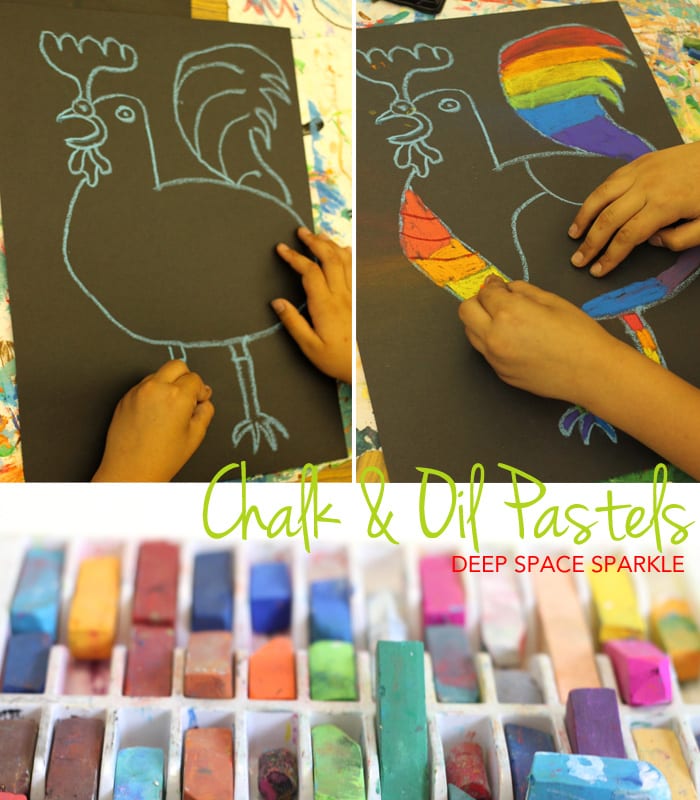
Using my collection of broken chalk pieces, I demonstrated how to color in a shape with one color, add another color for interest and then smudge the pastel with one finger. We call this painting with our fingers.
After all of the shapes have been colored in, the oil pastel is brought out and used to draw patterns on top of the chalk surface. You can use chalk pastels to add patterns but it tends to smudge. Oil pastel works best.
A quick outline of the rooster with a black (if they could find it) or a color of their choice creates an interesting pop to the final piece.
I had intended on using two art session to create this piece but 80% of the class finished in under 50-minutes. I really don’t know how but they did.
Here are some of my fifth graders version of Picasso’s Le Coq…
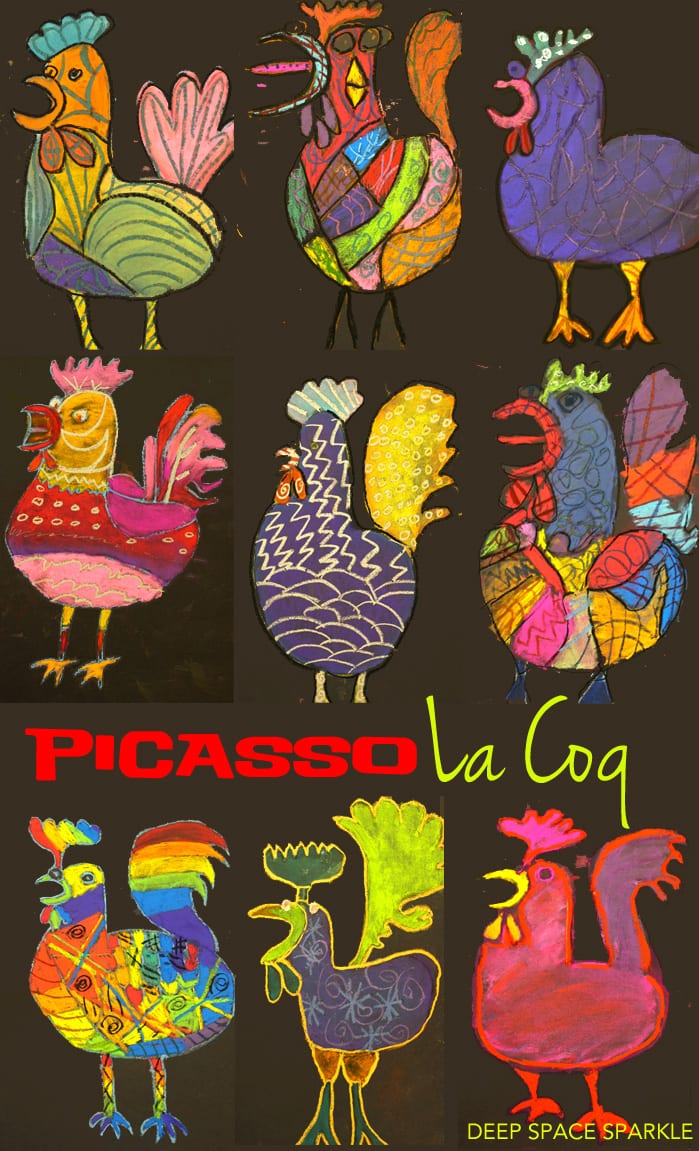

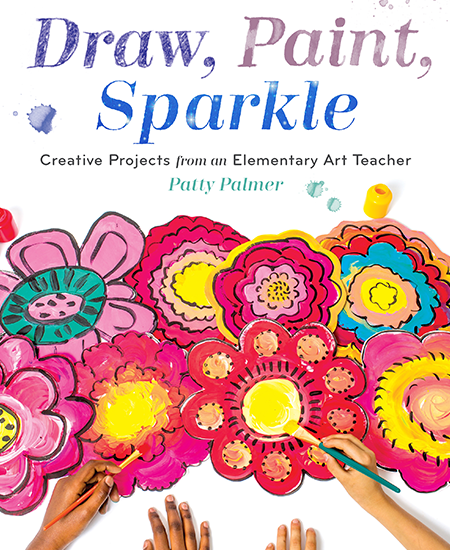







I have done this project with kindergarten and first grade and got amazing results. They had a lot of fun looking at how different they all were. I used the lesson to teach a bit about Picasso and to show students different doesn’t mean wrong.
Thanks!! I was wondering if this would work with my Grade 2 students!
just to let you know, Picasso’s painting is called “le coq”. It is a rooster/cock and even for the French they are always male and never female.
I love your lessons! We plan on doing this next week in our homeschool. I use your lessons all the time for our homeschooling art curriculum. Your lessons are easy to follow and always come out with such beautiful results! My kids love them! Best yet, they think I’m this *great* artist, but really, it’s just because I follow your directions well! lol
Thank you so much for taking your time to help all of us out here out!
🙂
I love it! It is so hard to find projects that I can modify up and down for my group (I have ages 4-14 in my room at the same time and have to modify for each on the fly) This one I can do!
This looks like a great project for my 5th grade. I can’t wait to try it!
Buen dia, me encantaria aprender estas tècnicas.
Soy de venezuela
My students in art club are doing tin le coq figures. They have an image which has been hot glued over they will then rub crumbled tin foil over and then use permanent markers too decorate
I know you did this project some time ago – but I still love looking at them – so vibrant and each one is unique. I’m going to do this with my Year 6s in a few weeks time! Thanks so much for sharing all that you do.
Googling art projects during this time of uncertainty and i love this!!! i am hoping many of my facebook friends will participate with my family <3 <3 Thank you for this <3
💖
I love this idea, but hope to interpret it in mosaic using recycled crockery…
I am a reading teacher, but I found this marvelous.
Excellent. Simple instructions, great illustrations. Generous sharing.
Hi Patty. Do you think this could be done by second and third graders? I’m surprised it’s a 5th grade project. What pitfalls should I anticipate?
great!
stunning
Love this ! I am going to try this in a simpler way with the kindergartners i teach !